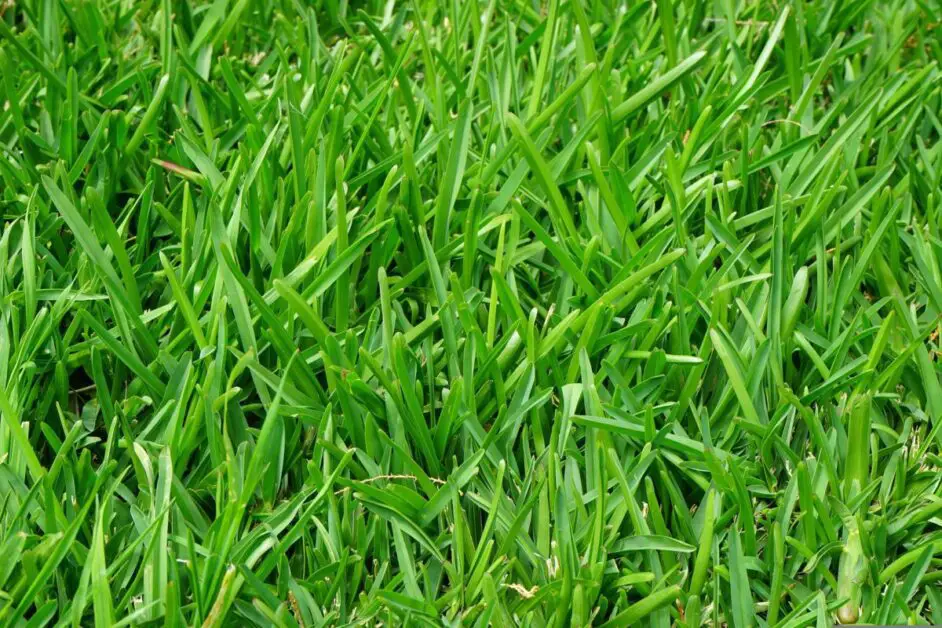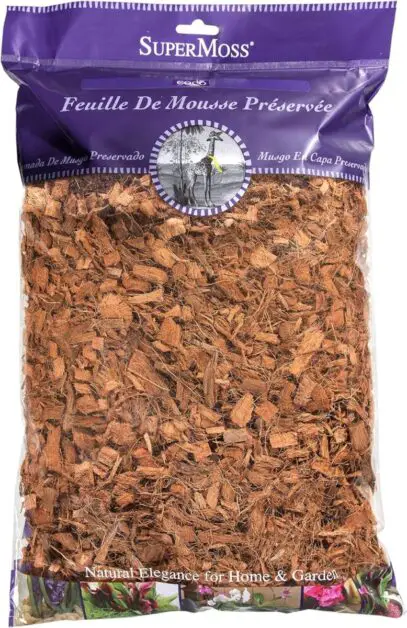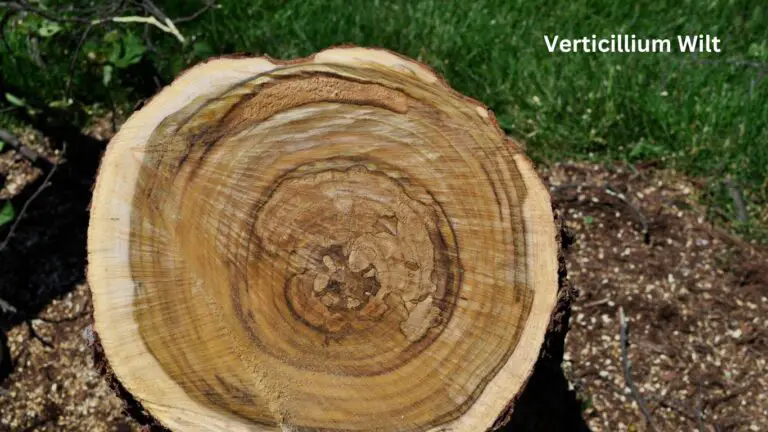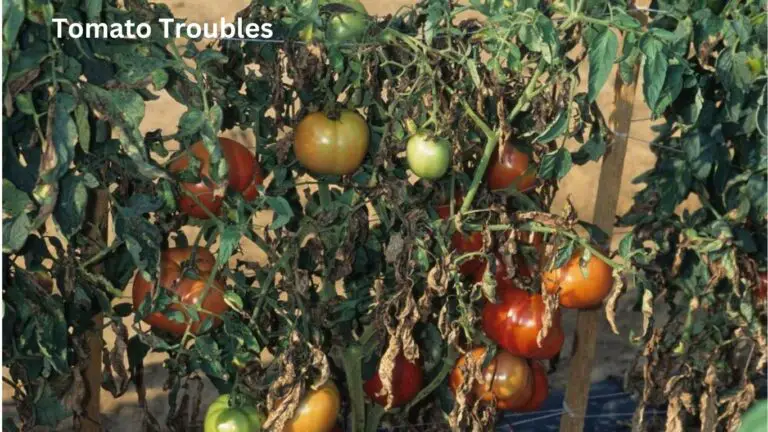Discover 11 Alternatives to Traditional Grass Lawns
Did you know that traditional grass lawns require a lot of water and maintenance? In fact, the average American household uses up to 320 gallons of water per day, with a significant portion going towards lawn irrigation. But what if there was a way to have a beautiful lawn without the high water bills and endless mowing?
Introducing 11 Alternatives to Traditional Grass Lawns that can save you time, money, and resources. From artificial turf to native plants, these options offer a variety of benefits, including reduced water usage, low maintenance, and increased biodiversity.
As a professional writer with expertise in landscaping and sustainability, I’ve gathered the latest information to provide you with a trustworthy and authoritative guide. Whether you’re a homeowner looking to save money or an environmentalist seeking to reduce your carbon footprint, this blog has something for you.
Discover the world beyond traditional grass lawns and explore the alternatives that can transform your outdoor space.
Table of Contents
The Environmental Impact of Traditional Grass Lawns
Lawn care is a common practice among homeowners, but what many might not realize is that traditional grass lawns have a significant environmental impact.
- Chemical Usage:
- Traditional lawns often require fertilizers, herbicides, and pesticides for maintenance.
- Excessive or incorrect application of these chemicals can lead to groundwater contamination, affecting aquatic life and drinking water quality.
- Water Consumption and Energy Usage:
- Frequent mowing and watering are necessary to keep grass lawns pristine.
- This contributes to excessive water consumption and energy usage.
- Air Pollution:
- Gas-powered lawnmowers emit harmful pollutants into the atmosphere.
- These emissions contribute to air pollution and greenhouse gas levels.
- Biodiversity Impact:
- Extensive grass lawns replace native plants and wildflowers.
- Native plants are crucial for supporting pollinators and other wildlife.
- Monoculture lawns lack the ecological benefits of diverse plant species.
In summary, transitioning away from traditional grass lawns can help mitigate these environmental challenges. Consider alternatives like native plant gardens, xeriscaping, or even hydroponic systems for sustainable green spaces. 🌿🌎
Understanding the Benefits of Alternatives to Traditional Grass Lawns
:max_bytes(150000):strip_icc()/lawn-alternatives-5113222_27-edddbcdb89a54e51a2de151c4b98b402.jpg)
- Increased Biodiversity: Alternatives like ground cover plants and meadow lawns attract a variety of wildlife, promoting biodiversity in your landscape.
- Reduced Maintenance: Transitioning to alternatives means less mowing, watering, and fertilizing, saving you time and effort.
- Water Conservation: These alternatives require less water than traditional grass lawns, helping to conserve this precious resource.
- Soil Health: By choosing alternatives, you can prevent soil erosion and improve soil health over time.
- Visual Interest: Unlike traditional lawns that can look the same year-round, alternatives offer diverse textures, colors, and seasonal changes for visual appeal.
- Eco-Friendly: Alternatives reduce the need for synthetic fertilizers and pesticides, promoting a healthier environment for plants and wildlife.
- Sustainable Landscaping: Embracing these alternatives supports a more sustainable approach to landscaping, benefiting both your property and the environment.
Q: Are there any benefits to using alternatives to traditional grass lawns?
A: Yes, there are numerous benefits to exploring alternatives to traditional grass lawns. One significant advantage is the reduced environmental impact. Traditional grass lawns require excessive amounts of water, fertilizers, and pesticides to maintain their appearance.
By opting for alternatives such as low-maintenance ground covers, xeriscaping, or native plants, you can significantly reduce water consumption and minimize the need for harmful chemicals. Additionally, alternatives like wildflower meadows and edible gardens provide habitat and food sources for pollinators, contributing to the preservation of biodiversity.
Q: Will choosing alternatives to traditional grass lawns affect the aesthetic appeal of my yard?
A: Not at all. In fact, alternatives to traditional grass lawns offer a wide range of aesthetic benefits. Incorporating native plants, ornamental grasses, or rock gardens can create a unique and visually appealing landscape. These alternatives often add texture, color, and diversity to your yard, making it a more captivating and vibrant space. Additionally, ground covers like moss lawns and clover lawns have a charming and natural beauty that can transform your yard into a lush, green oasis. With careful planning and creativity, the possibilities for enhancing the beauty of your yard with alternative options are endless.
The following table explain about the benefits of alternatives to traditional grass lawns in a garden:
| Benefit | Value/Quantitative Impact |
|---|---|
| 1. Water Conservation | – Reduced water usage by approximately 30-50%. |
| 2. Low Maintenance | – Time saved on mowing, trimming, and fertilizing. |
| 3. Drought Resistance | – Improved survival during water scarcity. |
| 4. Biodiversity Support | – Increased habitat for beneficial insects and wildlife. |
| 5. Reduced Chemical Usage | – Minimized need for pesticides and herbicides. |
| 6. Energy Savings | – Lower fuel consumption from reduced mowing. |
| 7. Improved Soil Health | – Enhanced soil structure and microbial activity. |
| 8. Allergen Reduction | – Reduced pollen production compared to grass. |
| 9. Enhanced Aesthetics | – Diverse textures and colors for visual appeal. |
| 10. Resilience to Foot Traffic | – Certain alternatives handle foot traffic well. |
Exploring Low-Maintenance Ground Covers for Your Yard
Ground covers are a practical and efficient alternative to traditional grass lawns, especially for those seeking a low-maintenance yard. With their ability to suppress weeds, reduce erosion, and require minimal watering, they offer a range of benefits that homeowners can appreciate.
- Soil Suitability:
- Different ground covers thrive in varying soil conditions.
- Consider your soil type (dry, sandy, or clayey) before selecting a ground cover.
- Examples:
- Creeping Jenny (Lysimachia nummularia) prefers moist soil.
- Sedum varieties are well-suited for dry, rocky soils.
- Impact on Insects and Pollinators:
- Ground covers play a vital role in supporting wildlife.
- Creeping Thyme (Thymus serpyllum) attracts bees and butterflies.
- These plants provide habitat and food sources for pollinators.
- Foot Traffic Tolerance:
- Some ground covers can handle light foot traffic.
- Corsican Mint (Mentha requienii) and Irish Moss (Sagina subulata) are good options.
- For high-traffic areas, consider alternatives like stepping stones or gravel paths.
Remember to choose ground covers based on your specific needs and the conditions in your yard. 🌿🌼
Xeriscaping: A Water-Saving Alternative to Grass Lawns
Xeriscaping is gaining popularity as a water-saving alternative to traditional grass lawns. This landscaping approach focuses on using low-water plants, efficient irrigation systems, and strategic design principles to create beautiful and sustainable landscapes. But what are some unique FAQs that can help homeowners better understand this method?
1. Can xeriscaping be aesthetically appealing?
Absolutely! Contrary to the belief that xeriscaping results in dry and barren landscapes, this approach can yield visually pleasing results. With careful selection of drought-tolerant plants, incorporating various textures, colors, and shapes can create a diverse and captivating garden. From vibrant succulents to native flowering species, xeriscaped yards can be tailored to match and enhance the aesthetic preferences of any homeowner.
2. Is xeriscaping limited to desert regions?
Not at all! While xeriscaping was initially popularized in arid regions, its principles can be applied to any climate. By selecting plants that are well-suited to the local environment, incorporating efficient watering systems, and practicing proper maintenance techniques, xeriscaping can thrive in locations with varying degrees of rainfall. It allows homeowners to reduce water usage and maintenance efforts, regardless of their geographical location.
“Lawn Gone!: Low-Maintenance, Sustainable, Attractive Alternatives for Your Yard” serves as an invaluable resource for transforming traditional lawns into eco-friendly, visually stunning landscapes. With comprehensive guidance on xeriscaping principles and plant selection, this book offers practical solutions for conserving water, reducing maintenance, and promoting biodiversity. Whether you’re a novice gardener or a seasoned landscaper, “Lawn Gone!” provides the inspiration and know-how to create beautiful outdoor spaces that benefit both the environment and the homeowner.
- Comprehensive Guidance: The book likely offers comprehensive guidance on xeriscaping, including design principles, plant selection, and maintenance techniques.
- Sustainability: It may promote sustainable landscaping practices that conserve water, reduce chemical use, and support local ecosystems.
- Cost Savings: By advocating for low-maintenance alternatives to traditional lawns, the book may help readers save money on water bills, lawn care services, and lawn maintenance equipment.
- Environmental Benefits: Xeriscaping can have numerous environmental benefits, such as reducing water pollution, minimizing habitat destruction, and conserving natural resources.
- Aesthetic Appeal: The book may showcase visually appealing xeriscaped gardens and inspire readers to create beautiful landscapes using drought-tolerant plants and eco-friendly design techniques.
- Regional Specificity: Some techniques and plant recommendations in the book may be more applicable to certain regions or climates, limiting its usefulness for readers in different geographic areas.
- Initial Investment: Converting a traditional lawn to xeriscaping may require an initial investment in materials and labor, which could deter some readers from adopting these practices.
- Preference: While xeriscaping is gaining popularity, some homeowners may still prefer the look and feel of traditional lawns, making the book less appealing to them.
- Maintenance: While xeriscaping requires less maintenance than traditional lawns, it still requires some upkeep, such as pruning, weeding, and occasional irrigation system maintenance.
- Learning Curve: Implementing xeriscaping techniques may require a learning curve for readers unfamiliar with sustainable landscaping practices, potentially leading to frustration or challenges during the transition process.
The Beauty and Functionality of Wildflower Meadows
Wildflower meadows are both a stunningly beautiful and highly functional addition to any landscape. These vibrant displays of native flowers not only enhance the aesthetic appeal of your yard but also offer numerous ecological benefits.
Ecological Benefits of Wildflower Meadows:
- Enhance aesthetic appeal of landscapes with vibrant displays of native flowers.
- Attract and support diverse pollinators such as bees, butterflies, and hummingbirds.
- Provide essential nectar and pollen sources, contributing to pollinator health and well-being.
Practicality and Maintenance:
- Contrary to common misconceptions, wildflower meadows require minimal upkeep once established.
- Opt for native wildflowers adapted to local climate and soil conditions for a low-maintenance landscape.
- Requires less mowing, watering, and fertilizing compared to traditional grass lawns.
- Mimic natural ecosystems, making them more resilient to pests and diseases, reducing the need for chemical interventions.
By choosing to establish wildflower meadows, homeowners can enjoy the beauty and functionality of these landscapes while also promoting sustainability and supporting local ecosystems.
Creating a Lush and Diverse Landscape with Native Plants
Native plants are a beautiful and practical choice for creating a lush and diverse landscape. These plants are well-adapted to the local climate and soil conditions, making them low-maintenance and resilient. By incorporating native plants into your yard, you can enhance the overall aesthetic appeal while also supporting the local ecosystem.
One unique frequently asked question about using native plants is whether they attract wildlife. The answer is a resounding yes! Native plants provide food and shelter for birds, butterflies, bees, and other beneficial insects. By creating a habitat with native plants, you are inviting a diverse range of wildlife to your yard, adding a lively and captivating element to your landscape. It’s truly a win-win situation – you get to enjoy the beauty of nature, while also providing a supportive environment for local wildlife.
The following table explain the different native plants:
| Native Plant Species | Mature Height (in inches) | Bloom Period (months) | Watering Frequency (days) | Sunlight Requirements |
|---|---|---|---|---|
| 1. Butterfly Weed (Asclepias tuberosa) | 24 – 36 | June to September | 7 – 10 | Full Sun |
| 2. Black-Eyed Susan (Rudbeckia hirta) | 24 – 36 | June to October | 7 – 14 | Full Sun to Partial Shade |
| 3. Coneflower (Echinacea purpurea) | 24 – 36 | June to August | 7 – 10 | Full Sun |
| 4. Little Bluestem (Schizachyrium scoparium) | 24 – 36 | July to February | 10 – 14 | Full Sun |
| 5. Virginia Bluebell (Mertensia virginica) | 12 – 24 | April to May | 7 – 10 | Partial Shade to Full Shade |
The Practicality of Artificial Turf as an Alternative to Grass Lawns
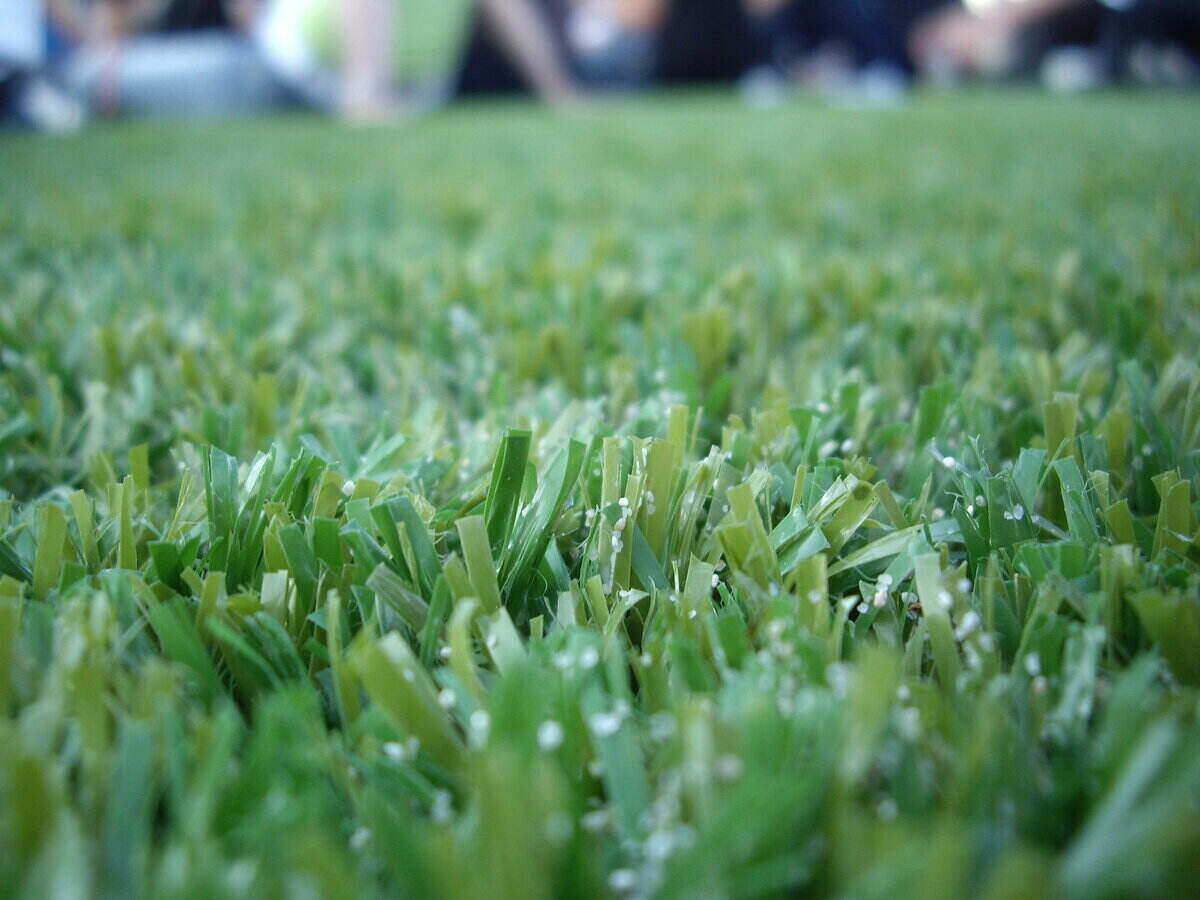
Artificial turf has gained popularity as a practical alternative to traditional grass lawns for various reasons.
Yes, artificial turf is an excellent choice for high-traffic zones like children’s play areas or pet zones.
Its synthetic materials are designed to withstand consistent foot traffic and playful activities.
Homeowners with active families or pets can rely on its durability.
Minimal upkeep: Unlike traditional grass lawns, artificial turf requires less maintenance.
Occasional brushing: Keep the fibers upright and prevent matting.
No need for pesticides or herbicides: Artificial turf is environmentally friendly.
In summary, artificial turf offers durability, low maintenance, and a green yard without the need for chemical treatments. 🌿🏡
Exploring the World of Ornamental Grasses for Your Yard
Ornamental grasses can bring a touch of elegance and beauty to any yard or garden.
Versatility of Ornamental Grasses:
- Ornamental grasses come in a wide variety of sizes, shapes, and colors.
- They offer a versatile choice for landscaping, adding elegance and beauty to any yard or garden.
Maintenance Requirements:
- Most ornamental grasses are known for their low maintenance requirements.
- Once established, they thrive with minimal care, making them attractive for those seeking a beautiful yard with minimal upkeep.
- Maintenance needs may vary depending on the specific variety chosen and individual preferences.
- Many ornamental grasses are drought-tolerant, making them suitable for drier climates and water conservation efforts.
By incorporating ornamental grasses into landscaping, homeowners can enjoy the aesthetic appeal and versatility of these plants while minimizing the time and effort required for maintenance.
The Versatility of Perennial Ground Covers in Landscaping
Perennial ground covers are a versatile option for landscaping that can provide numerous benefits while adding aesthetic appeal to any outdoor space. These low-growing plants spread horizontally, creating a dense and uniform cover over the ground.
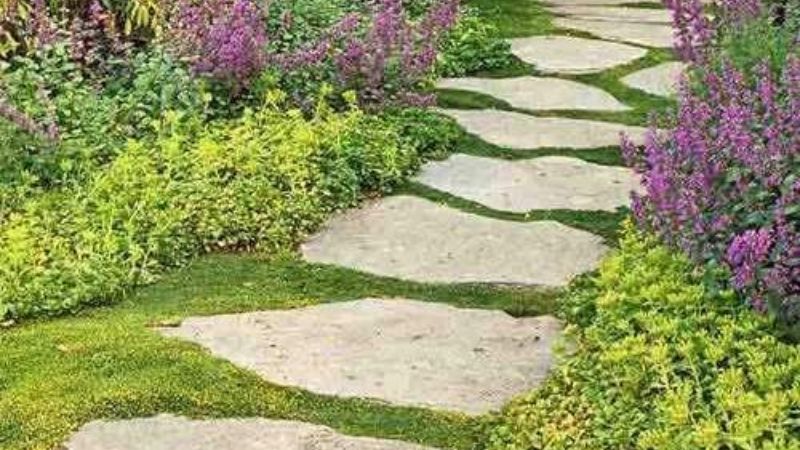
- Erosion Control:
- Dense Root Systems: Perennial ground covers have robust root systems that stabilize soil on slopes and steep areas.
- Preventing Soil Erosion: These roots prevent soil from washing away during heavy rainfall or windy conditions.
- Preserving Landscape Integrity: Homeowners can rely on them to maintain the integrity of their landscape.
- Weed Suppression:
- Thick Carpet Effect: Perennial ground covers form a dense carpet over the soil.
- Smothering Weeds: This effectively suppresses the growth of unwanted weeds.
- Sunlight Barrier: By blocking sunlight, they make it challenging for weed seeds to germinate.
- Reduced Need for Herbicides: Homeowners can minimize herbicide use due to effective weed control.
- Soil Moisture Retention:
- Natural Mulch: Perennial ground covers act as a natural mulch.
- Preserving Moisture: They reduce water loss through evaporation, maintaining soil moisture for nearby plants.
In summary, perennial ground covers offer multiple benefits beyond aesthetics—they play a vital role in maintaining a healthy and sustainable landscape. 🌿🌱
Enhancing Your Yard with Edible Gardens and Foodscaping
Edible gardens and foodscaping have become increasingly popular as people seek to not only enhance the aesthetics of their yard, but also to have access to fresh, homegrown produce. By incorporating edible plants into your landscape design, you can create a space that is not only beautiful to look at, but also functional and sustainable.

- Continual Harvest:
- Succession Planting: Sow seeds or plant seedlings at different intervals.
- This staggered approach ensures a steady supply of fresh produce throughout the year.
- Cold Frames and Hoop Houses:
- Extend your growing season by using protective structures.
- Cold frames and hoop houses shield plants during colder months, allowing year-round cultivation.
- Succession Planting: Sow seeds or plant seedlings at different intervals.
- Pest Prevention:
- Companion Planting:
- Strategically place plants with natural pest-repelling properties near susceptible crops.
- For instance, marigolds or garlic can deter pests like aphids and caterpillars.
- Garden Maintenance:
- Regularly remove weeds to eliminate hiding spots for pests.
- Ensure proper irrigation to keep plants healthy and resilient.
- Organic Pest Control:
- Opt for safer alternatives like insecticidal soaps or neem oil sprays.
- Minimize chemical pesticide use to protect the environment.
- Companion Planting:
By incorporating edible gardens and foodscaping into your yard, you can enjoy the benefits of fresh, nutritious food while also creating a visually appealing and sustainable landscape. With proper planning and maintenance, you can have a thriving garden that provides a continual harvest throughout the year and protects your plants from pesky pests.
The Benefits of Moss Lawns for a Green and Sustainable Landscape
Moss lawns are gaining popularity as a sustainable and eco-friendly alternative to traditional grass lawns. With their low maintenance requirements and ability to thrive in shady areas, moss lawns offer numerous benefits for homeowners who are looking to create a green and sustainable landscape. So, what makes moss lawns an attractive option?
- Low Maintenance of Moss Lawns:
- Moss lawns require minimal maintenance compared to grass lawns.
- Once established, moss lawns need little to no irrigation, conserving water resources.
- They do not require mowing, saving time and energy typically spent on lawn care.
- Moss lawns can thrive in shady areas, reducing the need for chemical herbicides and pesticides.
- Overall, moss lawns offer a hassle-free and environmentally friendly alternative to traditional grass lawns, allowing homeowners to maintain a lush green landscape while minimizing their environmental impact.
But how do you establish and maintain a moss lawn? Are there any specific considerations to keep in mind? In the next section, we will explore the unique frequently asked questions related to the installation, care, and benefits of moss lawns.
Incorporating Pavers, Gravel, and Hardscapes into Your Yard
Pavers, gravel, and hardscapes can provide an elegant and functional addition to any yard. Whether you are looking to create a charming pathway, a welcoming patio, or a visually appealing driveway, incorporating these elements can elevate the overall aesthetics of your outdoor space.
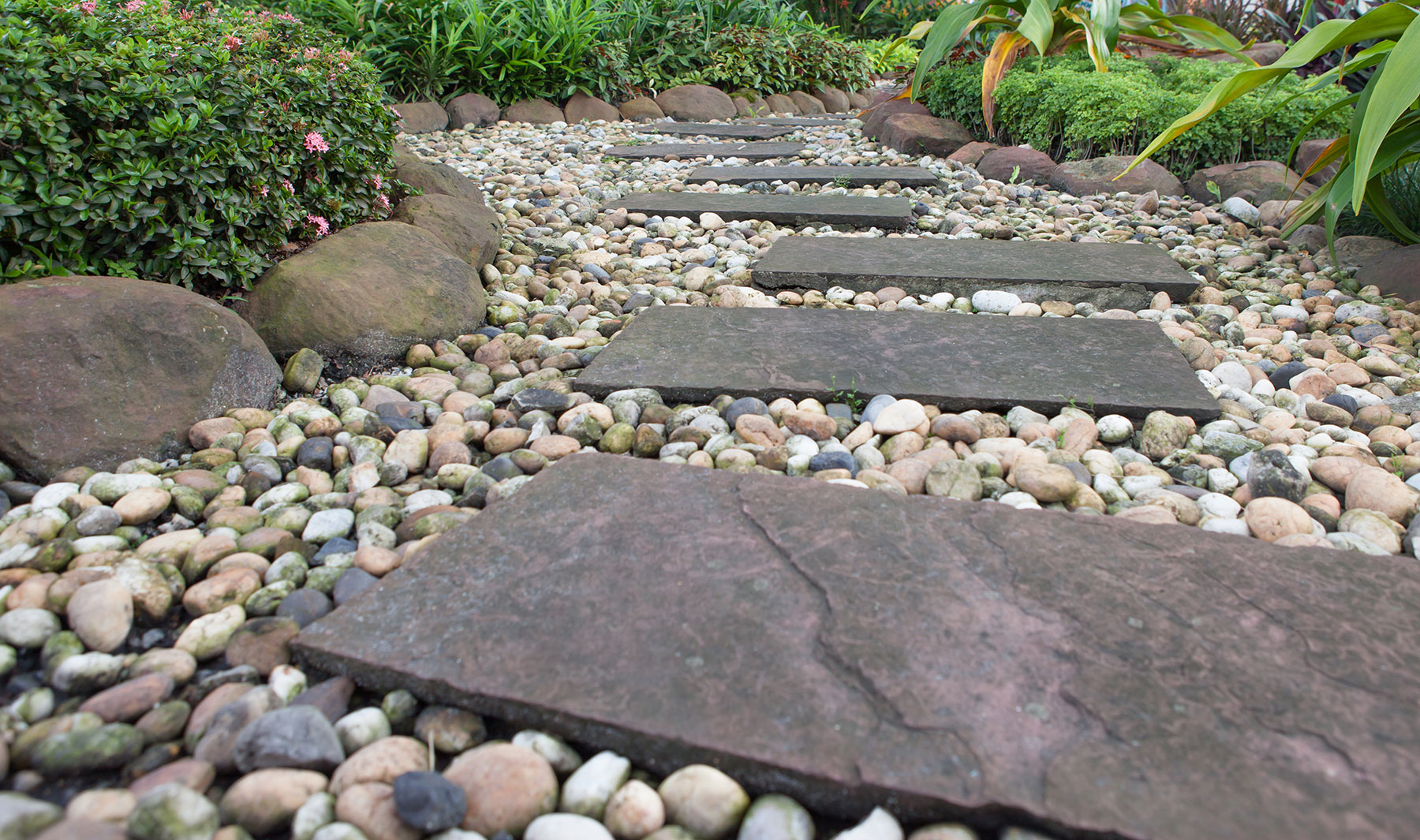
Durability of Pavers and Hardscapes:
- Designed to withstand heavy foot traffic and the elements, ensuring long-lasting integrity.
- With proper installation and regular maintenance, pavers and hardscapes can endure for many years.
- Offer excellent resistance to weather-related damage such as cracking and fading, making them ideal for outdoor surfaces.
Maintenance of Pavers and Hardscapes:
- Generally low-maintenance, but some upkeep is necessary to maintain their appearance.
- Regular sweeping helps remove debris and prevent dirt buildup.
- Occasional power washing can further clean and refresh the surface, enhancing its aesthetic appeal.
It is also important to inspect the joints and edges periodically for any signs of damage or weed growth, addressing them promptly to maintain the integrity and appearance of your hardscape. By following these simple maintenance practices, you can ensure that your pavers and hardscapes continue to enhance your yard for years to come.
The Charm and Benefits of Clover Lawns
Clover lawns are gaining popularity due to their charm and numerous benefits.
:max_bytes(150000):strip_icc()/GettyImages-1287399485-280f3ceeb9d04cc4a2805c7c91062923.jpg)
- Attracting Bees:
- Yes, clover produces small flowers that bees love.
- However, having bees in your lawn is beneficial.
- Bees play a vital role in pollination and contribute to the ecosystem.
- Creating a clover lawn provides them with a valuable food source.
- Maintenance Level:
- No, clover lawns are low-maintenance.
- Their deep root system helps suppress weeds, reducing the need for frequent weed control.
- Clover is highly drought-tolerant, requiring less water than traditional grass lawns.
- Ideal for homeowners seeking a beautiful lawn with minimal effort.
So, embrace the bees and enjoy the beauty of your clover-covered lawn! 🌼🐝
Exploring the Aesthetics and Benefits of Rock Gardens
Rock gardens are a popular choice for homeowners looking to add a touch of elegance and natural beauty to their landscapes. These unique gardens incorporate a variety of rocks and stones, arranged in a visually appealing manner, to create a serene and low-maintenance outdoor space. But beyond their aesthetic appeal, rock gardens offer several tangible benefits that make them a worthwhile addition to any yard.
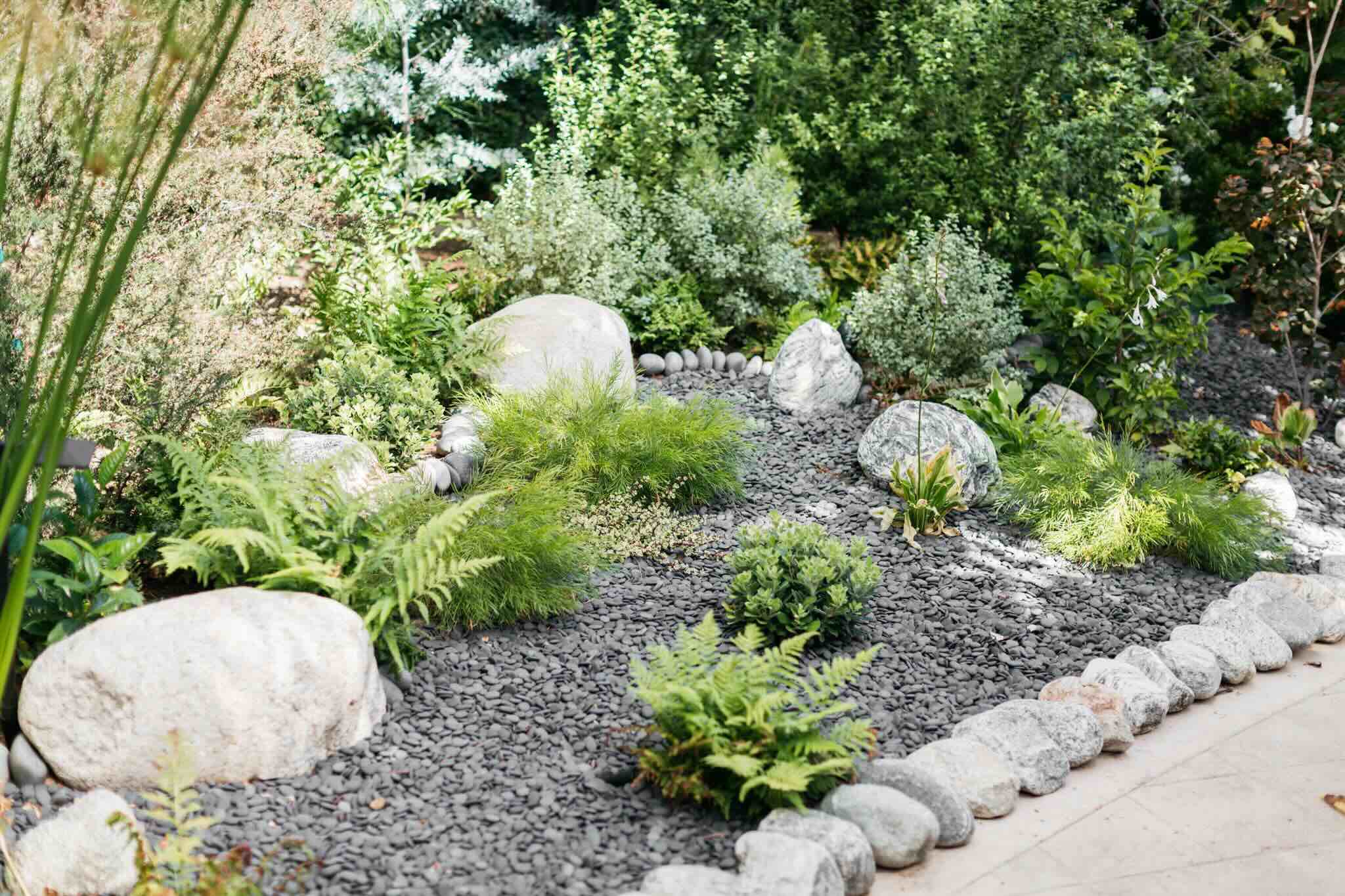
Incorporate a variety of rocks and stones arranged in an aesthetically pleasing manner.
Create a serene and low-maintenance outdoor space with natural beauty.
Offer tangible benefits beyond aesthetic appeal.
Suitable for various climates, including dry and arid regions, as well as cold and snowy environments.
Careful selection of rocks and plants ensures adaptation to specific climate conditions.
Native or drought-tolerant plants and proper drainage systems help rock gardens withstand extreme temperatures and minimize watering.
Practical and sustainable option for water conservation and reducing environmental impact.
By following these points, homeowners can understand the versatility and benefits of incorporating rock gardens into their landscapes, regardless of their climate or environmental conditions.
Utilizing Mulch and Wood Chips for a Low-Maintenance Yard
Mulch and wood chips offer an excellent solution for achieving a low-maintenance yard. These organic materials provide numerous benefits while requiring minimal effort to maintain. For those seeking a practical and sustainable landscaping option, utilizing mulch and wood chips can make a significant difference.
One frequently asked question is, “What types of mulch are best for a low-maintenance yard?”
While there are various options available, organic materials such as shredded bark, wood chips, and composted leaves are highly recommended. These materials not only help retain moisture but also suppress weed growth, reducing the need for frequent maintenance. Additionally, they gradually decompose, enriching the soil with nutrients and improving its overall health. Whether you choose to use mulch around garden beds or as a ground cover in larger areas, opting for organic varieties ensures environmental sustainability while providing an attractive aesthetic for your yard.
Incorporating Super Moss Coco Mulch into my garden has been a game-changer. Its natural, sustainable composition not only enhances the aesthetics of my garden beds but also promotes healthy plant growth. The excellent moisture retention properties have reduced the frequency of watering, while its ability to suppress weeds has minimized maintenance efforts. However, its slightly acidic pH may not be suitable for all plants, requiring careful consideration of species preferences. Overall, Super Moss Coco Mulch offers a practical and environmentally friendly solution for maintaining vibrant and thriving garden spaces.
✅ Moisture Retention: It has excellent water retention properties, helping to keep soil moist and reducing the frequency of watering.
✅ Weed Suppression: Coconut mulch forms a dense layer that helps suppress weed growth, reducing the need for herbicides.
✅ Temperature Regulation: It helps insulate the soil, keeping it cooler in summer and warmer in winter, which promotes healthy plant growth.
✅ Longevity: Coconut mulch breaks down slowly, providing long-lasting benefits to the soil and plants.
✅ Aesthetic Appeal: Its natural appearance adds an attractive finish to garden beds and landscaping.
❌ Slow Decomposition: While its longevity is a benefit, the slow decomposition of coconut mulch means it may not contribute as much organic matter to the soil as other types of mulch.
❌ Cost: Coconut mulch can be more expensive than other types of mulch, such as wood chips or straw.
❌ Potential for Compaction: Over time, coconut mulch may compact, reducing its effectiveness in retaining moisture and suppressing weeds.
❌ Floating: Coconut mulch may float away during heavy rainfall or irrigation, requiring replenishment or additional anchoring measures.
❌ Nutrient Content: Coconut mulch has minimal nutrient content, so additional fertilization may be necessary for plants with high nutrient requirements.
The Importance of Proper Maintenance and Care for Your Chosen Alternative Lawn
Proper maintenance and care for your chosen alternative lawn is crucial to ensure its longevity and aesthetic appeal. While alternative lawns often require less maintenance compared to traditional grass lawns, they still require some level of attention to thrive and remain healthy. Here are some unique frequently asked questions (FAQs) that address important aspects of maintaining and caring for your alternative lawn:
1. How often should I water my alternative lawn?
The watering frequency for alternative lawns varies depending on the specific type of lawn you have chosen. Generally, alternative lawns require less water compared to traditional grass lawns. However, it is essential to monitor the moisture levels regularly and water your alternative lawn when needed. Factors such as the climate, season, and soil type will also influence the watering requirements of your chosen alternative lawn.
2. Do alternative lawns require fertilization?
Unlike traditional grass lawns, some alternative lawns may not require regular fertilization. However, it is important to provide proper nutrients to ensure healthy growth and vibrant colors. Before applying any fertilizers, it is advisable to consult with an expert or refer to specific care guidelines for your chosen alternative lawn. Using organic, slow-release fertilizers can be a more sustainable and environmentally friendly option for maintaining the overall health and appearance of your alternative lawn.
Remember, investing time and effort into proper maintenance and care for your chosen alternative lawn will not only enhance its beauty but also contribute to a sustainable and eco-friendly landscaping solution.
Watch video for more information:
FAQ
How does traditional grass lawns impact the environment?
Traditional grass lawns require a significant amount of water, pesticides, and fertilizers, which can have negative effects on water quality and contribute to air pollution. Additionally, maintaining traditional grass lawns often involves mowing, which emits greenhouse gases and contributes to noise pollution.
What are the benefits of alternatives to traditional grass lawns?
Alternatives to traditional grass lawns offer numerous benefits, such as reduced water usage, lower maintenance requirements, improved biodiversity, and enhanced aesthetic appeal. These alternatives can also help to reduce the use of chemicals and promote a more sustainable ecosystem.
What are some low-maintenance ground covers for yards?
Some low-maintenance ground covers for yards include creeping thyme, clover, sedum, and moss. These ground covers require less mowing, watering, and fertilization compared to traditional grass lawns.
What is xeriscaping and how does it save water?
Xeriscaping is a landscaping technique that focuses on water conservation. It involves using drought-tolerant plants, efficient irrigation systems, and mulch to reduce water usage in yards. Xeriscaping can save water by minimizing evaporation, reducing runoff, and promoting deep root growth.
What are the benefits of wildflower meadows in a landscape?
Wildflower meadows provide numerous benefits, including attracting pollinators, enhancing biodiversity, reducing water usage, and adding natural beauty to the landscape. They also require less maintenance compared to traditional grass lawns.
Why are native plants important for a lush and diverse landscape?
Native plants are adapted to the local climate, soil conditions, and wildlife, making them more resilient and requiring less maintenance. They also provide habitat for native wildlife, help prevent erosion, and support local ecosystems.
Is artificial turf a practical alternative to grass lawns?
Artificial turf can be a practical alternative to grass lawns for some homeowners. It requires minimal maintenance, no watering, and remains green all year round. However, it does have a higher upfront cost and may not provide the same ecological benefits as natural grass or other alternatives.
What are some popular ornamental grasses for yards?
Some popular ornamental grasses for yards include feather reed grass, fountain grass, switchgrass, and maiden grass. These grasses add texture, movement, and visual interest to the landscape while requiring less maintenance compared to traditional grass lawns.
How can perennial ground covers enhance landscaping?
Perennial ground covers can enhance landscaping by providing year-round coverage, reducing erosion, suppressing weeds, and adding visual appeal. They also require less maintenance and can withstand various weather conditions.
How can edible gardens and foodscaping enhance a yard?
Edible gardens and foodscaping can enhance a yard by providing fresh produce, reducing the need for transportation and packaging, and promoting sustainable food practices. They can also add beauty and diversity to the landscape.
What are the benefits of moss lawns for a sustainable landscape?
Moss lawns offer several benefits for a green and sustainable landscape. They require minimal watering, no mowing, and no fertilizers or pesticides. Moss lawns also provide a soft, lush, and natural aesthetic while helping to retain moisture and reduce soil erosion.
How can pavers, gravel, and hardscapes be incorporated into a yard?
Pavers, gravel, and hardscapes can be incorporated into a yard to create pathways, patios, and other functional areas. These features can reduce the amount of water needed for lawn maintenance, add visual interest, and provide a low-maintenance alternative to traditional grass lawns.
What are the benefits of clover lawns?
Clover lawns offer several benefits, including nitrogen fixation, which helps fertilize the soil naturally, reducing the need for synthetic fertilizers. They also require less watering, mowing, and maintenance compared to traditional grass lawns. Additionally, clover lawns attract bees and other beneficial insects.
What are the aesthetics and benefits of rock gardens?
Rock gardens provide a unique and aesthetically pleasing landscape feature. They require less watering, reduce erosion, provide habitat for certain plants, and add texture and visual interest to the yard. Rock gardens can also be low-maintenance and suitable for areas with poor soil conditions.
How can mulch and wood chips contribute to a low-maintenance yard?
Mulch and wood chips can contribute to a low-maintenance yard by suppressing weeds, conserving moisture, and improving soil health. They can also add a finished look to the landscape, reduce erosion, and help regulate soil temperature.
What is the importance of proper maintenance and care for alternative lawns?
Proper maintenance and care are crucial for the long-term success and health of alternative lawns. Regular watering, weeding, pruning, and fertilizing may still be necessary, although generally at a reduced frequency compared to traditional grass lawns. Adequate maintenance ensures the desired aesthetics, functionality, and sustainability of the chosen alternative lawn.

Studied Agricultural Engineering-Plant Protection at University of California, Davis.
Head of Content writing team at Southelmontehydroponics.com

